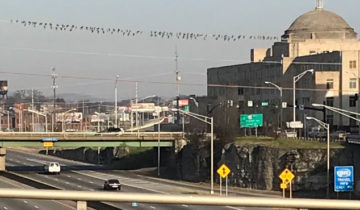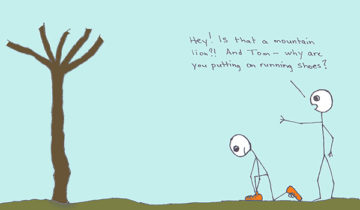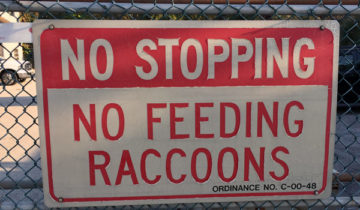
White-tailed deer are amazing animals. Sleek, fast and elegant. Beautiful to behold as they graze in open meadows in the early morning or late afternoon. Captivating as they leap and bound to safety, their white tails pointing straight up as move with majestic speed.
As animals of prey, white-tailed deer are naturally observant animals. Their very existence depends on their ability to smell, see or hear predators before those predators notice them. It’s an impressive skill set. I’m no animal anthropologist, but I suspect that those skills are a healthy mix of instinct and experience.
Around where I live about this time of year there are inevitably a frightening number of deer killed as they try to cross the road. The ghastly scenes of bloodied roadways can be horrific to see.
As the environments of humans and deer increasingly overlap, I wonder why deer have not evolved a better sense of speed and depth perception. Is it because the pace of evolution moves too slowly to be of immediate benefit to deer? Cars have been around for over 100 years. I know that evolution happens in small increments over millennia, but surely the deer’s insufficient instincts or lack of natural ability could be better augmented by the wily mothers and older siblings teaching young Bambi how to gage the speed of passing cars and trucks.





Are animals of prey traumatized by the death of their mothers, fathers and siblings? More specifically, would a wild white-tailed deer feel sad when it sees another deer get struck and killed by a car? I imagine that it would feel fear and a heightened sense of the need to pay caution, but do would it feel more than that?
Social learning like that is available on only a few higher order species, humans being the best at it. So no, deer would rely on instinct and personal experience. They do learn some things from their mother’s but only by example (e.g., where to find food, what plants are food, etc.)
100 years is nothing to the evolutionary process. 1000 years is not really very much. One big problem in biology is that the evolutionary process would take longer to create us as we understand it than it would have had time to do so. This is why panspermia is such a big idea right now.
That is not to say that deer are not undergoing evolutionary change. They are. Every deer that dies on the road inches the species as a whole that much closer to a deer that would not so easily be killed by a car. It’s a fascinating process to think about. One of the biological thing that would change is when they freeze in the presents of headlights. Contrary to popular opinion, this is not a fear response. If it were, they would be gone before you saw them. Their brains are literally being temporarily overloaded by headlights glare.
@Liam, that would require a certain level of rational thought that deer do not posses. The avoidance of danger and seeking of food is something that is done subrationally.